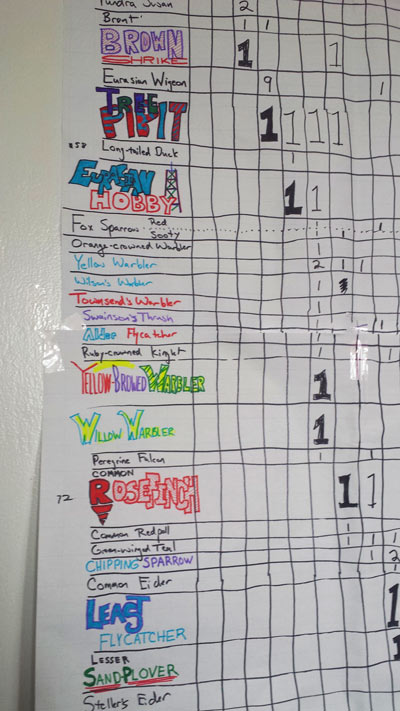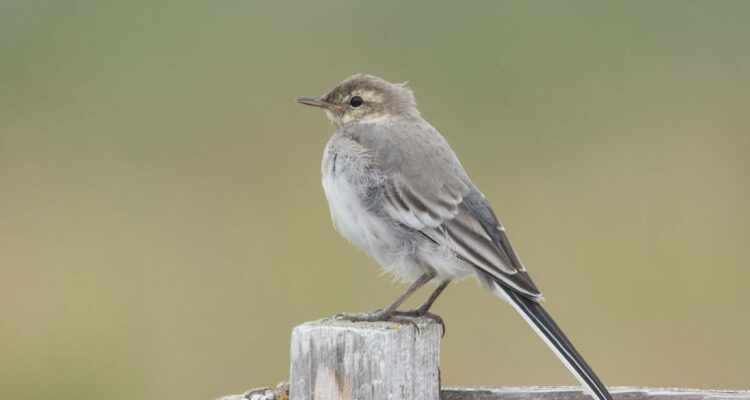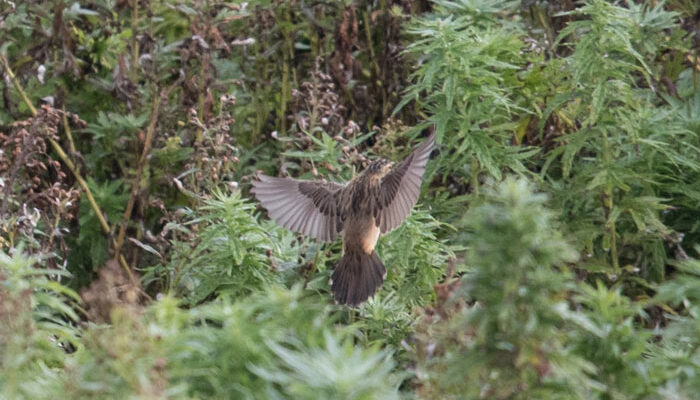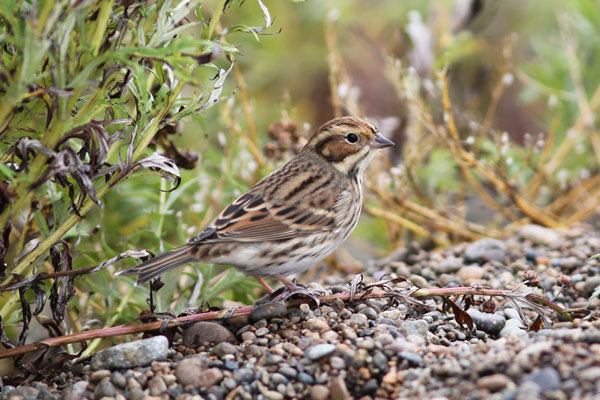It's been a great fall season for Wilderness Birding Adventures with exciting and productive trips to…
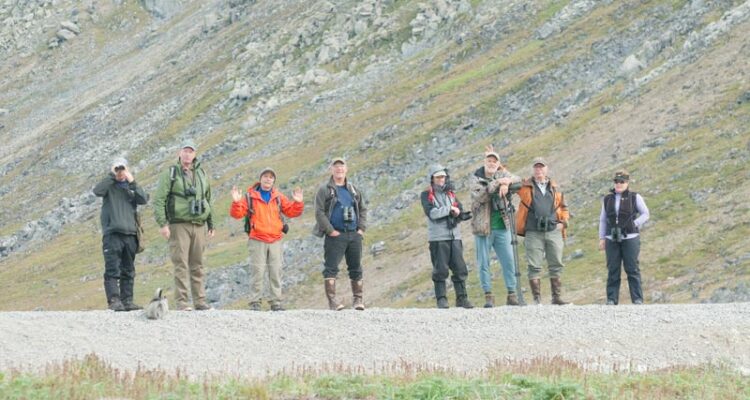
September 4, 2014: One Incredible Day
Fall Migration at Gambell on Saint Lawrence Island is some of the most exciting birding you’ll find in Alaska. Since 1999, eight species have been added to the North American Bird List because of fall birding on Gambell: Yellow-browed Warbler, Willow Warbler, Lesser Whitethroat, Spotted Flycatcher, Pallas’s Leaf Warbler, Yellow-browed Bunting, Sedge Warbler, Blyth’s Reed Warbler. A very long list of other rarities appear with some regularity in Gambell, and birds like Gray-tailed Tattler, Red-throated Pipit, and Sharp-tailed Sandpiper are regular migrants.
On any given day during the fall, however, the birding might be slow and it’s not uncommon to weather a few stretches of quiet on the migration front. And then there are days where the stars align and the conditions for bringing in migrants are set up perfectly during the peak of migration. Every once in a while, there are days that defy belief, days that fill a birder’s head with exciting memories for years to come. September 4th, 2014 was one such day and it was the beginning of three-day rarity-filled extravaganza!
We knew it was going to be a special day. The night before, WBA leader James Huntington found a EURASIAN HOBBY late in the evening. Most birders had already retired for the evening, but James dutifully spread the word to all birders in the village and nearly every birder rallied for a late-night search. After a feverish effort, the Eurasian Hobby was relocated just before dark on an old radio tower where it had gone to roost. So on the morning of September 4th, all birders on the island began the day by quietly assembling in the dark, optics trained on the tower. As the light increased, the outline of the hobby took shape, perched near the top of the tower. This was the first island record and a life bird for nearly everyone. This alone would be plenty of excitement to make this a very memorable day. However, it turned out that the Eurasian Hobby was just the tip of the iceberg.
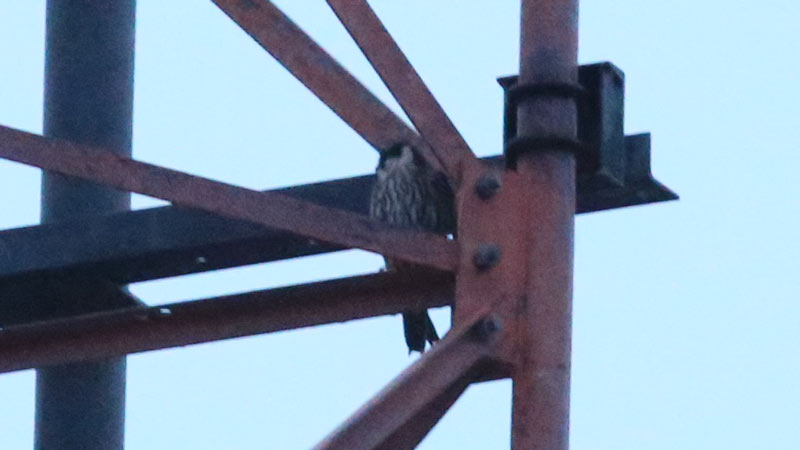
This Eurasian Hobby spent the night in this tower roost. We watched it go to bed in the evening and leave in the morning. Photo James Levison.
After watching the Eurasian Hobby leave its perch in the dawn light, never to be seen again, our first walk was through the Near Boneyard. The previous few days in the boneyards had been relatively quiet, so any new migrant would be eagerly seen as a good omen. Our morning stroll through the Near Boneyard produced several Arctic Warblers, Gray-cheeked Thrushes, and Bluethroats—all of which arrived overnight. None of these species are rare, but it was clear that new migrants had arrived! During the night the wind switched from light southwest to light southeast with early morning rain, the perfect mix for dropping birds from both directions. Our late morning sweep through the Far Boneyard was loaded with birds, including goodies from both continents. The highlights included two rarities from Asia: WILLOW WARBLER and a singing (!) YELLOW-BROWED WARBLER (Gambell’s 5th and about the 10th for North America, all since 1999).
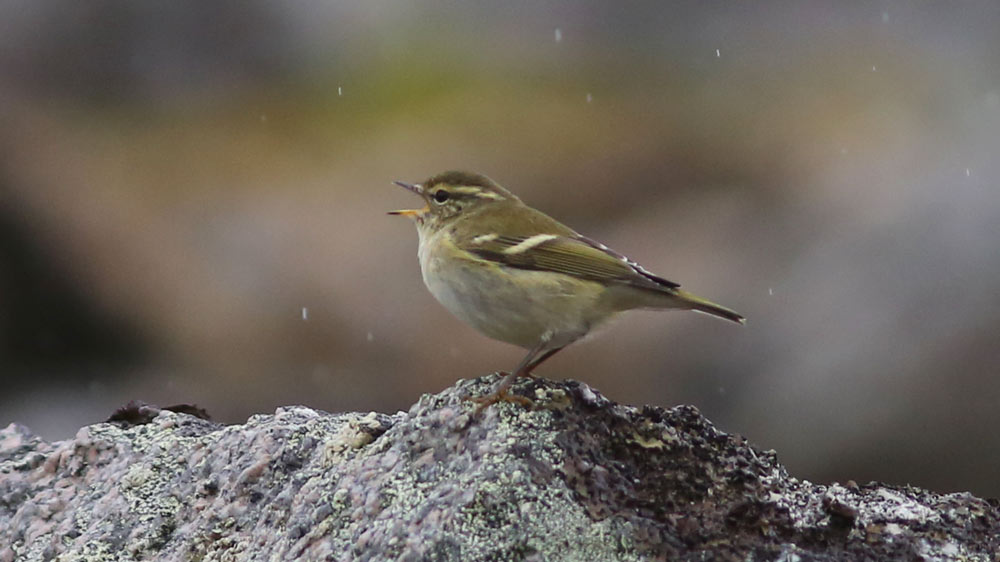
A Yellow-browed Warbler sings from a rock pile in Gambell. Photo James Levison.
At Gambell, when the birding is good, it’s really good, and you never know what to expect. The Far Boneyard held treasures from mainland Alaska as well. Surprises which were perhaps more impressive than those from Asia. From North America, the winds brought the first island record of ALDER FLYCATCHER, Gambell’s fourth record of TOWNSEND’S WARBLER, as well as RUBY-CROWNED KINGLET, SWAINSON’S THRUSH, ORANGE-CROWNED, YELLOW, and WILSON’S WARBLER. This was more passerines than we’d seen in the far bone yard at any one time in a number of years. It was a thrilling and odd experience to watch a mixed warbler flock containing Willow, Arctic, Yellow-browed, and Townsend’s Warbler! Paul Lehman’s sharp spotting picked out a RED-EYED VIREO above the Far Boneyard, the first for Bering Sea region, but it escaped up the mountain before our group could get on it. And lest we forget, what nearly became just a footnote on an incredible day, North America’s fourth record of TREE PIPIT was still showing well in the boat yard!
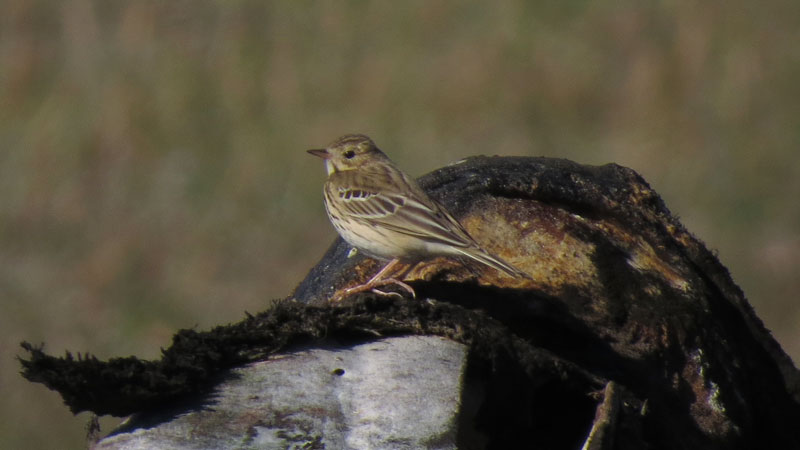
Our group found the fourth North American record of Tree Pipit two days before the fall-out of September 4th. Photo David Govatski.
After one of the most exhilarating days I’ve ever spent on Gambell, we slept well and happily. After a good night’s sleep, we awoke to the final day of the main tour. What would we find today? Those departing the tour today had one last chance to scour the Far Boneyard for something new. Nearly all of yesterday’s birds seemed to have departed the island and our first pass through the bone yard yielded nothing new. However, the BROWN SHRIKE from a few days ago made an appearance and sat cooperatively, if not briefly, on the pump house fence. After the shrike showed off its disappearing trick, we made a second pass through the far bone yard and James Huntington turned up a very cooperative COMMON ROSEFINCH, fitting punctuation for an unforgettable week of birding. After saying farewell to our friend the lingering TREE PIPIT, four of our party left on the afternoon flight. The Tree Pipit apparently left that evening as well.
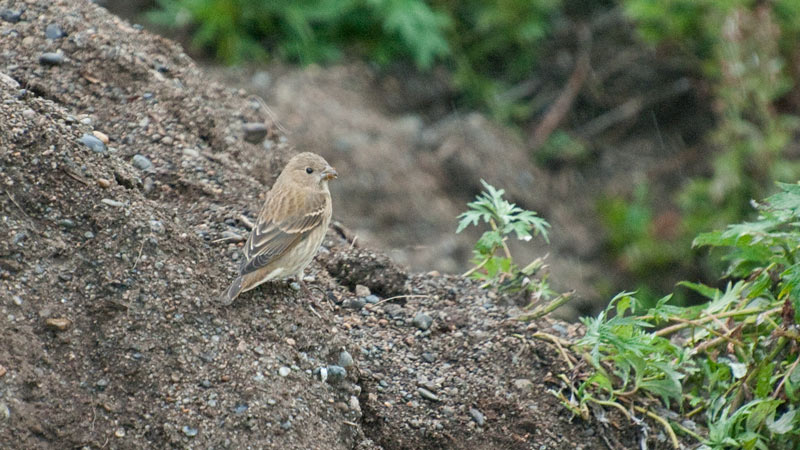
A very accommodating Common Rosefinch pauses from its meal of seeds to pose for the camera. Photo Aaron Lang.
Those who stayed on the island for the extension added a few more exciting birds to their trip. Three very different types of rare birds turned up on the first day of the extension: a confiding LESSER SAND-PLOVER fed on the shore of Troutman Lake, a LEAST FLYCATCHER (the second island record) played hide-and-seek in the boat yard, and a reverse migrant CHIPPING SPARROW (the second of four for our trip) showed up in the revetments south of Troutman Lake. You really should expect the unexpected at Gambell!
September 4th, 2014, kicked off a feverish three days of the best rarity-finding I’ve ever experienced. Gambell is indeed a special place. I mean, Townsend’s and Yellow-browed Warblers together!?!
~Aaron Lang
